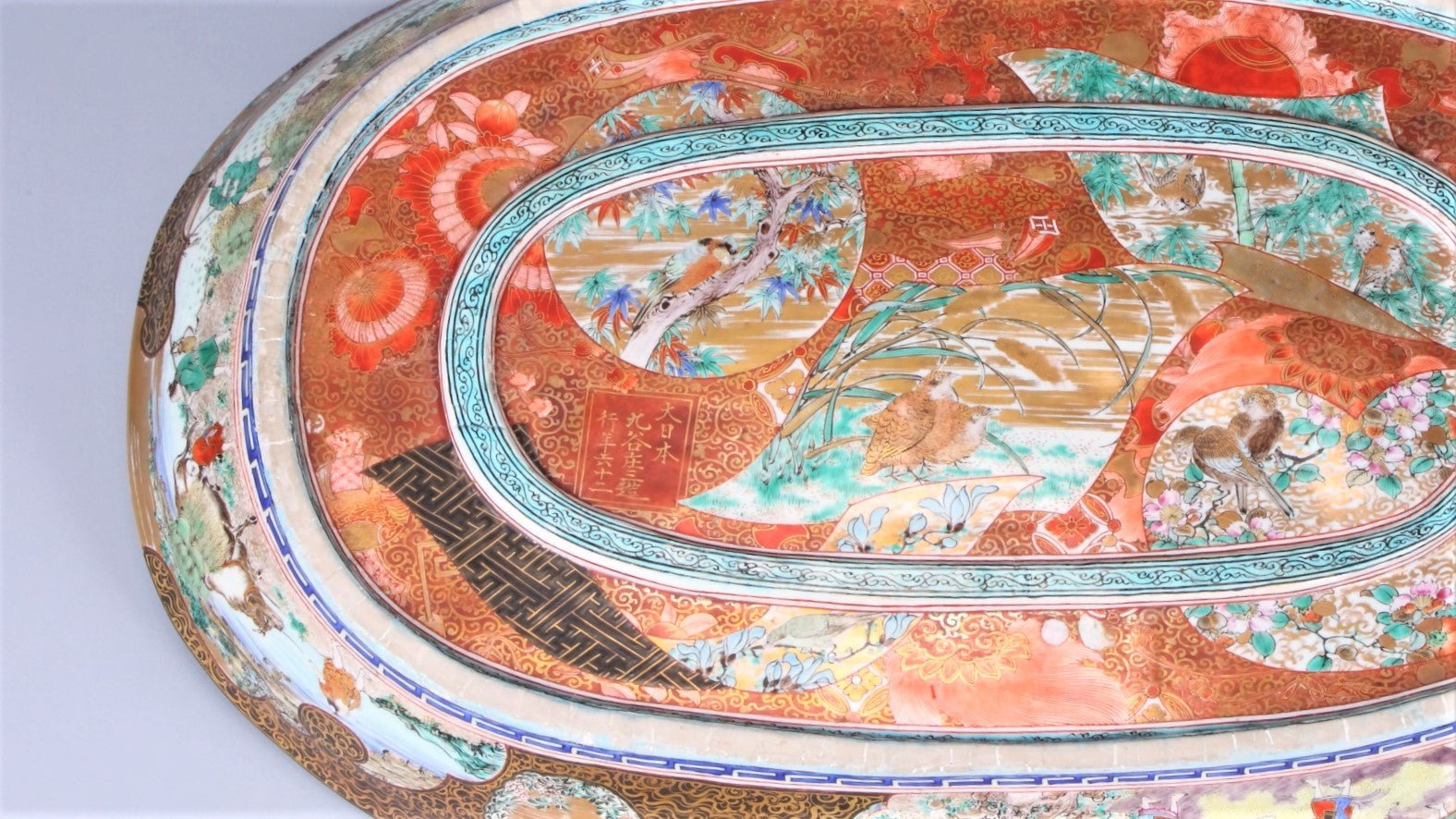
What is Kutani Shoza Style?
Written by Team MUSUBI
The Shoza style is a fine and gorgeous style of painting that uses Western-style paints in addition to the traditional Kutani Gosai (red, green, yellow, purple, and navy blue) to create detailed and vivid pictures, and then applies gold on top. This style of painting is called Saisiki-kinrande−multicolored design with integrated gold−. The delicate and graceful Shoza style, which incorporates all kinds of Kutani ware decoration techniques, is a sight one will want to forever gaze at. It’s highly regarded by people and has made a name for itself worldwide as "JAPAN KUTANI."
KUTANI Shoza

Although he sometimes painted Chinese-style landscapes, Shoza seemed strongly drawn to images of farmers working in rural areas. Some of his masterpieces depicting farming and tea-picking scenes in the style of Yamato-e (Japanese painting inspired by the Tang dynasty) are highly regarded as masterpieces to this day.

Kutani ware today has inherited wonderful characteristics from its history–expanding further and creating a world of beautiful colors that are hard to resist. This includes five-colored paints originating from Ko-Kutani, the Western paints that came from the West at the end of the Edo period, and the Kinran-de technique inherited from EIRAKU Wazen. Please see below stories to learn more about the history of Kutani ware.

















Leave a comment
This site is protected by hCaptcha and the hCaptcha Privacy Policy and Terms of Service apply.